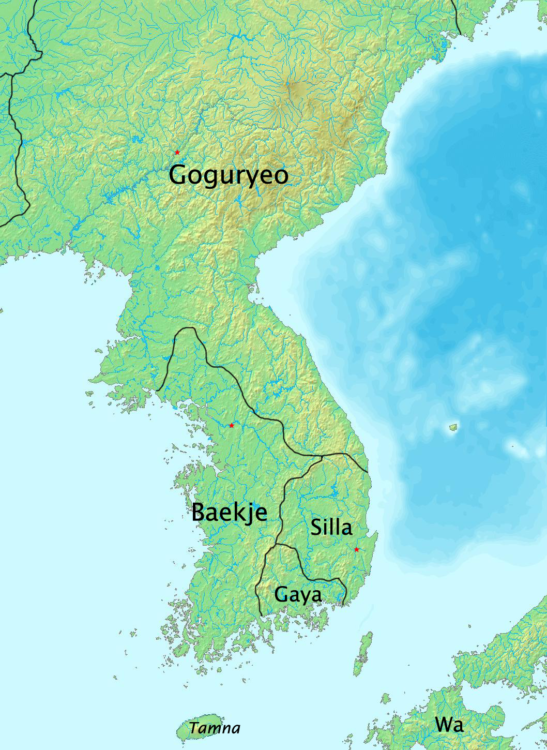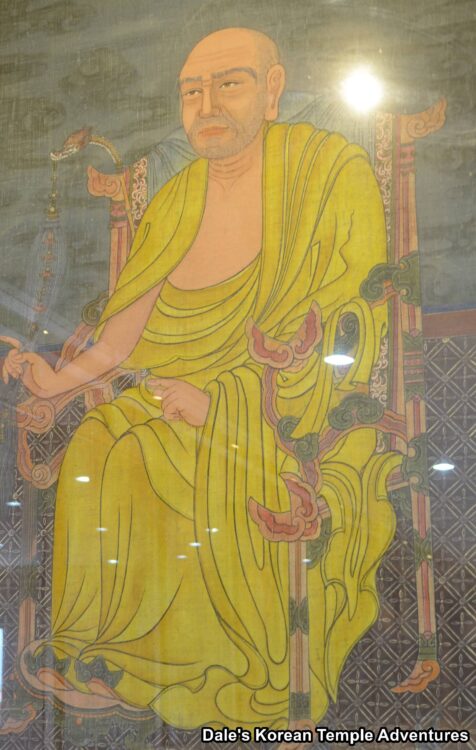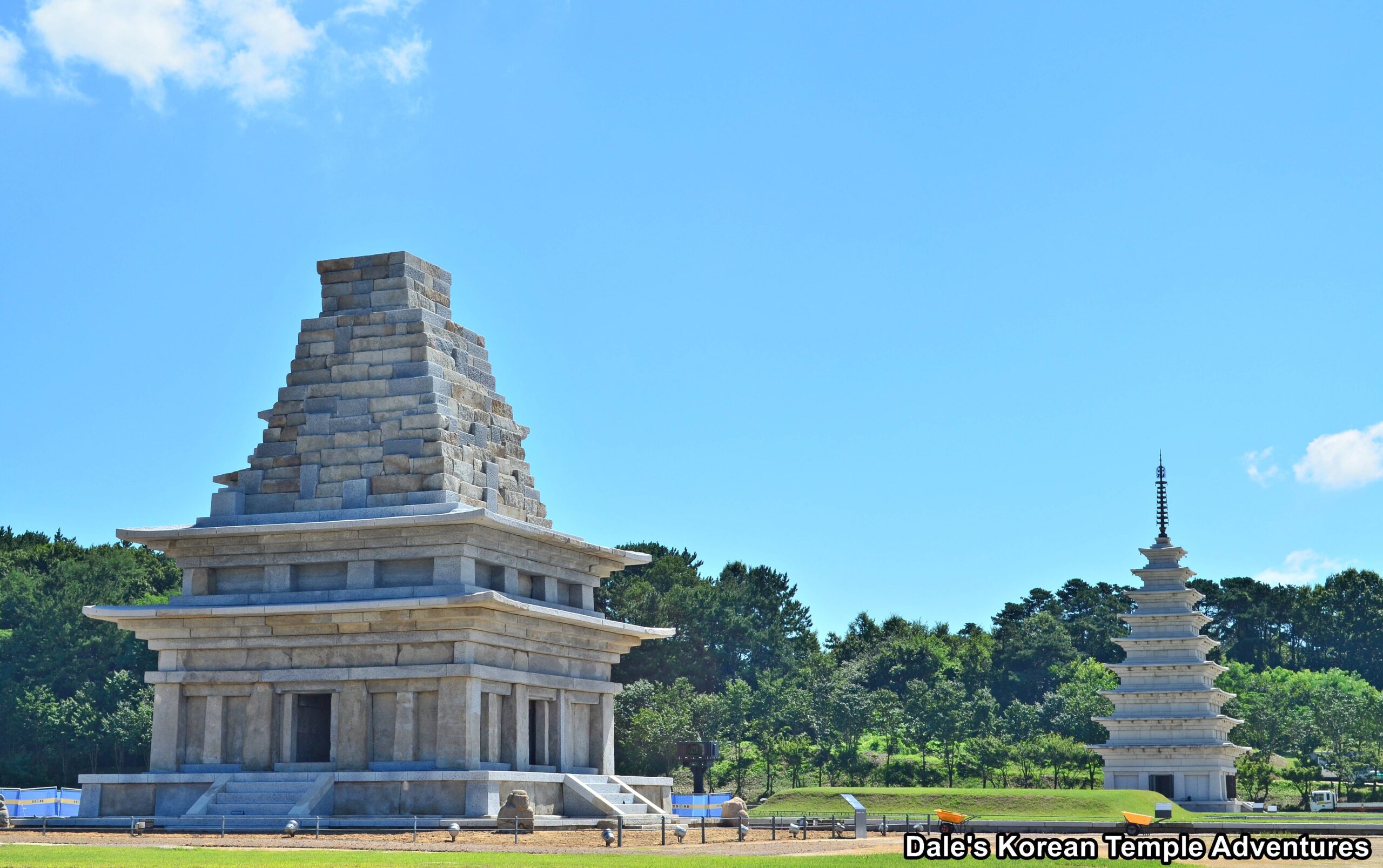
The Baekje Kingdom (18 B.C. – 660 A.D.) was a strong kingdom that existed for well over six hundred years. The Baekje Kingdom controlled a vast area of land at the height of its power. The Baekje Kingdom mostly controlled the western portion of the Korean peninsula from north of Pyongyang, North Korea down to the southern-most portions of modern day Jeollanam-do. It was founded by King Onjo (r. 18 B.C. – 28 A.D.) at Wiryeseong (present-day southern Seoul). Also, the Baekje Kingdom became a significant maritime power with political and trade relations with both Japan and parts of China.
A full twelve years after Buddhism arrived on the Korean peninsula, in the Goguryeo Kingdom (37 B.C. – 668 A.D.), it spread to the Baekje Kingdom in 384 A.D. It was first brought by an Indian monk named Marananta, during the first year of King Chimnyu of Baekje‘s reign (r. 384 – 385). He came from Eastern Jin (266 – 420 A.D.); however, there is very little known about this monk that was so vital to the introduction of Buddhism to the Baekje Kingdom. In the Samguk Sagi, or the “History of the Three Kingdoms” in English, however, there is mention of Marananta’s introduction of Buddhism to the Baekje Kingdom. “In the month [of the year of his coronation], a monk from Ho, China, called Marananta, came from China. The king welcomed him into the palace and treated him with respect. That was the beginning of Buddhism [in Baekje].”

This introduction of Buddhism is further corroborated by the Samguk Yusa, or the “Memorabilia of the Three Kingdoms,” in English, when it states, “In the following year, the year of Uryu [385 A.D.], a Buddhist monastery was built in the new capital, Hansanju, and ten monks were installed in it. This was the beginning of Baekje Buddhism.” As these two quotes affirm, Buddhism was openly accepted by the Baekje royal court. This then allowed for the free spread of Buddhism throughout the entire kingdom. This was further solidified in 392 A.D. by the Baekje king, when he ordered his people to “Believe in Buddhism and receive good fortune.” In just eight short years, the new religion of Buddhism had firmly established itself in the Baekje Kingdom.
In under a hundred years, the Baekje Kingdom would simply struggle to survive. To survive, the Baekje capital moved to Gongju in 475 A.D. Not long after this move, the capital moved back to Sabi. It was during this time that Baekje society underwent extensive social change. King Seong of Baekje, who will be spoken of a bit more in depth later, continued this reorganization during his reign from 523 – 554 A.D. Some of this social reorganization also found its way into the religious sphere. King Seong supported the spread of Buddhism to help solidify the Baekje Kingdom’s spiritual foundation. In doing this, he also hoped to strengthen Baekje society as a whole, as well. In addition to these domestic reforms, King Seong also strengthened ties with the Southern Dynasties of China. With these ties and reforms, King Seong attempted to recover land that was formally Baekje’s in the Han River basin; however, when the Silla Kingdom (57 B.C. – 935 A.D.) betrayed the Baekje Kingdom, this hope was quickly dashed. With this betrayal, the Baekje Kingdom and the Goguryeo Kingdom (37 B.C. – 668 A.D.) formed an alliance against the more powerful Silla Kingdom. Together, these two kingdoms launched repeated attacks against the Silla Kingdom. It was from this point that the Baekje Kingdom and the Silla Kingdom became enemies.
It was also during this time of political turmoil, and during the reign of King Seong, that Buddhism in the Baekje Kingdom really started to make a greater contribution to both Baekje culture and society. No greater example of this contribution can be found than in monk Gyeomik. Monk Gyeomik traveled all the way to India by sea to learn about Buddhist teachings. And in 526 A.D, he returned to the Baekje Kingdom. He was joined by an Indian monk named Vedatta. They returned with texts that focused on the Vinaya (the monks’ rules, as well as the stories that led to their formulation). Together, the two would go on to translate some seventy-two Sanskrit Vinaya texts at Heungnyunsa Temple. The adventures of the monk Gyeomik are important for two very significant reasons. First, Gyeomik traveled by sea to visit India. This journey predates Hyecho’s similar journey by three hundred years. So this makes monk Gyeomik’s journey to India pioneering. The other point that Monk Gyeomik’s adventures illustrate is the educational level of the Baekje Kingdom. For the monk Gyeomik to translate Sanskrit texts truly speaks to just how high the level of education in the Baekje Kingdom must have been at this time.
With the spread and development of Buddhism domestically in the Baekje Kingdom, it stands to reason that it would also be cultivated outside of the Baekje Kingdom borders, as well. Near the end of King Seong’s reign, and in 552 A.D., the Baekje Kingdom introduced Buddhism to Japan. King Seong sent Dalsol Sachigye with several gifts like a golden Buddha statue, a Mireuk-bul (The Future Buddha) statue, and Buddhist texts. This initial introduction was met with some resistance; however, in time, it would grow to be accepted. Also, several Japanese monks would go on to visit the Baekje Kingdom to learn more about Buddhism. As a result, Baekje Buddhism helped contribute to the early formation and development of Japanese Buddhism.
It was also during this time, in 541 A.D., that the Baekje Kingdom established diplomatic relations with the Liang Dynasty (502 – 557 A.D.) in China. As China was an advanced Buddhist nation, and due to diplomatic ties, Baekje Kingdom temples started to sprout up quicker throughout the kingdom. Also, they were much larger in size, as well.

The height of Buddhist artistry and architecture in the Baekje Kingdom was reached at Mireuksa Temple in present-day Iksan, Jeollabuk-do. The temple was completed in 602 A.D., and it was a masterpiece of Baekje Buddhist artistry which included a large wooden pagoda book-ended by a pair stone pagodas. In fact, the remnants of one of the stone pagodas is known as the Mireuksa-ji Stone Pagoda, which is Korean National Treasure #15. And the temple site is Historic Site #150, which truly speaks to the overall beauty of the temple.
Unfortunately, and on July 9th, 660 A.D., the coalition of the Silla Kingdom and Tang Dynasty (618–690, 705–907 A.D.) attacked the Baekje Kingdom. Heavily outnumbered, Baekje forces would be completely annihilated at the Battle of Hwangsanbeol, near Nonsan, under the leadership of Gen. Gyebaek. With the utter destruction of the Baekje Kingdom army, the capital of Sabi quickly fell. This resulted in the annexation of the Baekje Kingdom to its long held nemesis, the Silla Kingdom. The Baekje king, King Uija (r. 641 – 660 A.D.), would be exiled off to China, and some of the ruling class would end up in Japan, thus drawing a close to one of Korea’s most powerful kingdoms.



Recent comments